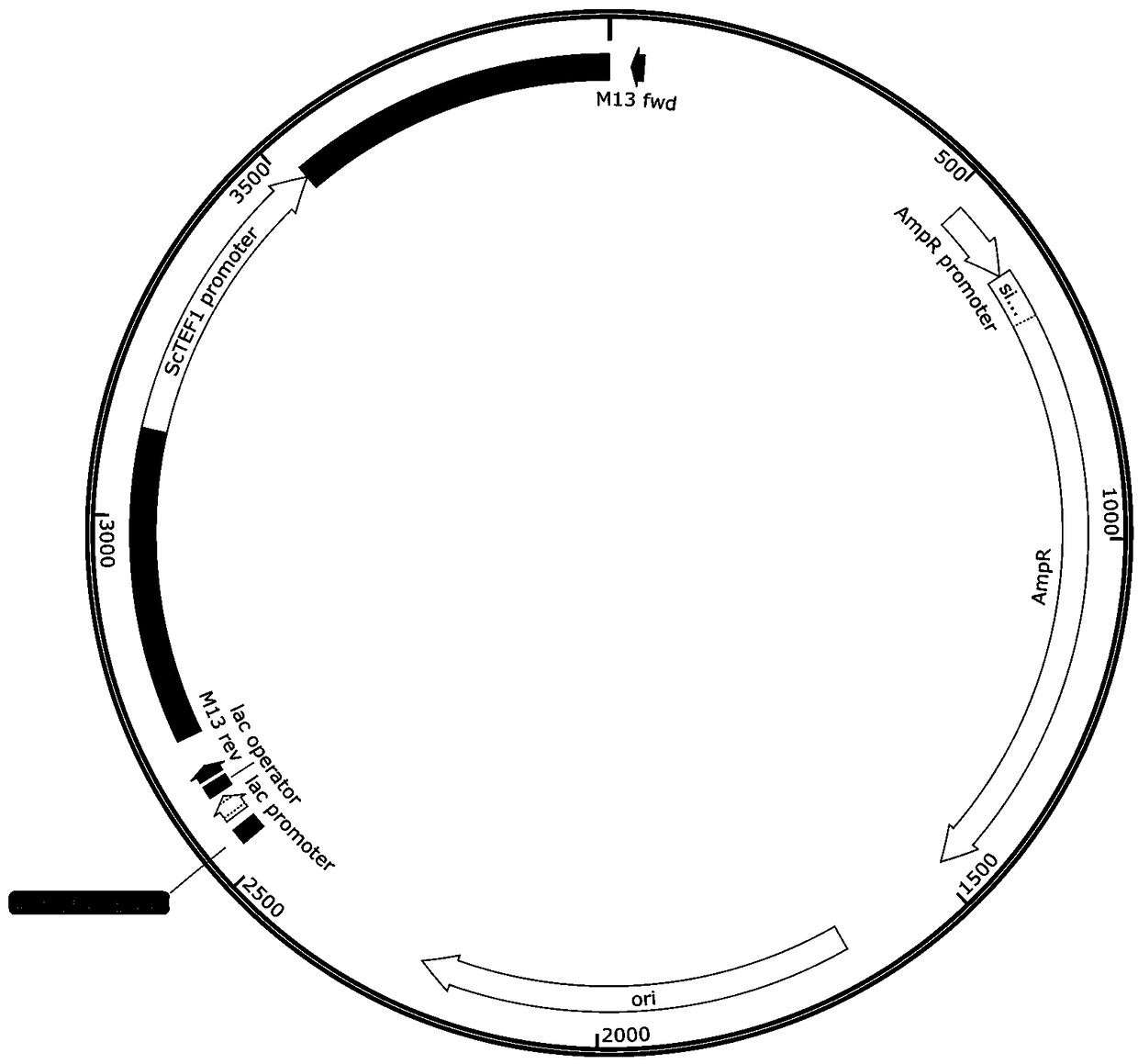Novel fusion protein preparation method and application of novel fusion protein for increasing protein synthesis
A protein synthesis and fusion protein technology, which is applied in the field of improving protein synthesis and the preparation of new fusion proteins, can solve the problems of low efficiency, slow speed, and limitation of protein synthesis applications, and achieve the effect of improving translation efficiency
- Summary
- Abstract
- Description
- Claims
- Application Information
AI Technical Summary
Problems solved by technology
Method used
Image
Examples
preparation example Construction
[0141] In the present invention, the preparation method of the yeast cell extract is not limited, and a preferred preparation method includes the following steps:
[0142] (i) providing yeast cells;
[0143] (ii) washing the yeast cells to obtain washed yeast cells;
[0144] (iii) subjecting the washed yeast cells to destructive treatment to obtain crude yeast extract;
[0145] (iv) performing solid-liquid separation on the crude yeast extract to obtain the liquid part, which is the yeast cell extract.
[0146] In the present invention, the solid-liquid separation method is not particularly limited, and a preferred method is centrifugation.
[0147] In a preferred embodiment, said centrifugation is performed in a liquid state.
[0148] In the present invention, the centrifugation conditions are not particularly limited, and a preferred centrifugation condition is 5000-100000×g, preferably 8000-30000×g.
[0149] In the present invention, the centrifugation time is not parti...
Embodiment 1
[0193] Example 1 Theoretical Model for Improving Protein Synthesis Through Genetic Modification
[0194] The present invention uses CRISPR-Cas9 gene editing technology to K. lactis The translation initiation factors eIF4G and Pab1 were optimized to improve the efficiency of the cell-free in vitro translation system.
Embodiment 2
[0195] Example 2 Transformation of translation initiation factors by CRISPR-Cas9 to improve the efficiency of in vitro translation systems
[0196] 2.1 Translation initiation factor by CRISPR-Cas9 technology ikB strong promoter
[0197] 2.1.1 KleIF4G sequence search and CRISPR gRNA sequence determination
[0198] eIF4G is an important factor in the process of translation initiation. In the current reports, there is no case of optimizing the expression of endogenous eIF4G through gene editing technology to improve in vitro translation activity. According to the theoretical model in Example 1, the present invention uses the CRISPR-Cas9 gene editing technology to modify the expression of the translation initiation factor KleIF4G, so as to improve the efficiency of the cell-free in vitro translation system.
[0199] based on S. cerevisiae in yeast eIF4G gene sequence. in the NCBI database as eIF4G Gene comparison analysis by BLAST, to determine the Kluyveromyces lactis ...
PUM
 Login to View More
Login to View More Abstract
Description
Claims
Application Information
 Login to View More
Login to View More - R&D Engineer
- R&D Manager
- IP Professional
- Industry Leading Data Capabilities
- Powerful AI technology
- Patent DNA Extraction
Browse by: Latest US Patents, China's latest patents, Technical Efficacy Thesaurus, Application Domain, Technology Topic, Popular Technical Reports.
© 2024 PatSnap. All rights reserved.Legal|Privacy policy|Modern Slavery Act Transparency Statement|Sitemap|About US| Contact US: help@patsnap.com










